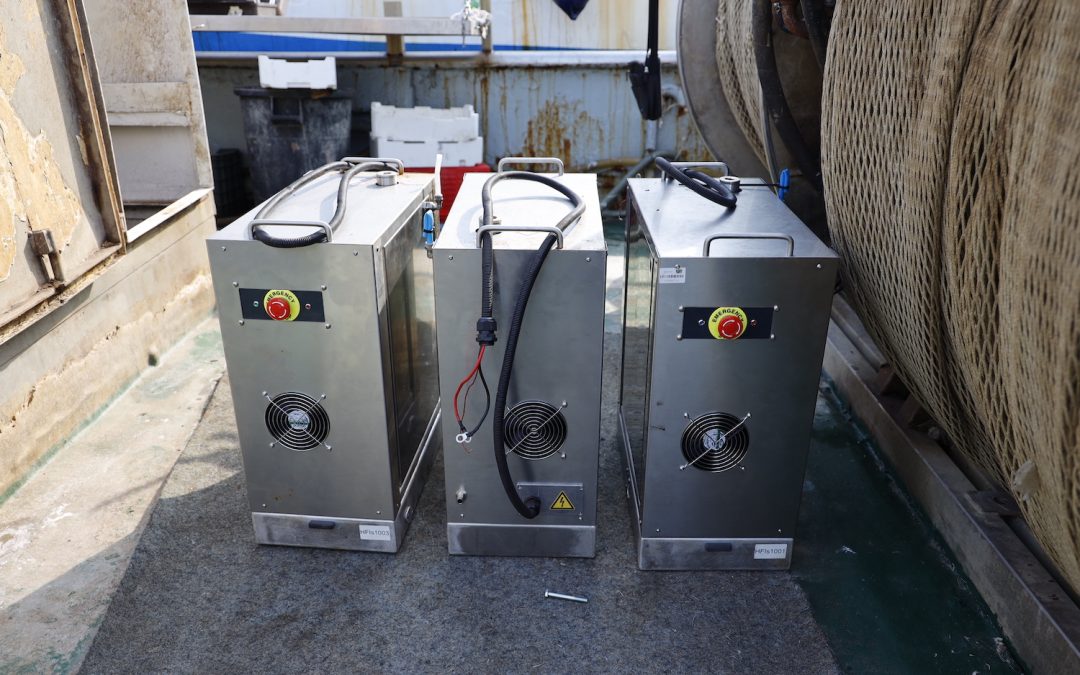Producing hydrogen from zootechnical liquids and fish farming, decarbonizing the agriculture and fishing sector: that’s the goal of the H2E project, Hydrogen to Everyone, funded as part of Regione Lombardia’s call for proposals “Innovazione dei processi e dell’organizzazione delle filiere produttive e di servizi e degli ecosistemi industriali produttivi ed economici in Lombardia”.
H2E project is the result of a partnership between several companies, headed by the lead partner Techinnova, with the aim of establishing in Lombardia a cross-sector supply chain for the production, storage and use of green hydrogen – and corresponding supplement in three specific use cases – according to circular economy logics.
As explained by Dr. Riccardo Roggeri, CEO of Techinnova, the H2E project represents a “ready-to-use” technological innovation, thus clearly distinguishing itself from projects aimed at developing hydrogen engines.
The heart of H2E supply chain innovation lies in the box made by Acca Industries which is directly installed on standard diesel engines of fuel oil-powered tractors and fishing boats. The box constantly monitors engine performance and mixes hydrogen with diesel fuel. This system thus makes it possible to take advantage of hydrogen’s characteristics that allow the engine’s power to increase, thanks to hydrogen’s better detonating property, thereby reducing fossil fuel consumption and carbon dioxide emissions of vehicles that are difficult to “decarbonize” with other techniques. In this regard, Dr. Roggeri said, “Our approach is not about creating hydrogen engines, but rather about applying hydrogen to conventional diesel-powered combustion engines. This represents a key step in the transition of companies that are currently oriented toward a fossil-fuel based business, and that tomorrow may shift their focus to using hydrogen as an energy carrier. This approach opens up new possibilities for the decarbonization of vehicles such as tractors, fishing boats and city compactors, which have always had a very negative impact in terms of carbon footprint.”
The H2E project not only aims to make hydrogen usable on existing engines, but also aims to develop a new system for producing green hydrogen from secondary raw materials. Unlike electrolysis, in which hydrogen is produced from water, Nutritech, one of the partners in the H2E project, has developed a system for producing hydrogen from ammonia (NH3) coming from livestock fluids and fish farming. The technology used to accomplish this process is a catalyst dedicated to stripping hydrogen at low temperatures. “What makes the H2E project truly extraordinary and fully sustainable is the use and exploitation of previously unused resources – or with potential that has remained largely unexpressed – in order to generate clean energy,” Dr. Roggeri explains.
All phases of analysis, design, implementation and deployment of solutions are conducted through a proprietary platform – created through the synergistic collaboration between SNJ Media Studio, MTM, Cripax Creations, Athesys and Connecteam – that makes use of Artificial Intelligence, machine learning, blockchain and augmented or virtual reality. The marketing of products and services resulting from the supply chain is entrusted to a proprietary e-commerce platform held by Donkey Commerce.
It is therefore because of the high content of digital technologies involved that the H2E project aims to innovate the hydrogen supply chain at all stages, from the design to the commercialization of project outputs. Unlike parallel projects that aim to build hydrogen-ready infrastructure for future hydrogen technologies, the H2E project diametrically reverses the paradigm to a ready-to-use perspective: the requirement is to produce hydrogen-ready solutions, exploiting the full potential of existing engines.






Recent Comments